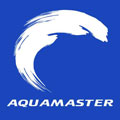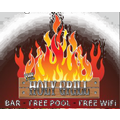On a glance:

Sail Rock
Installation of permanent student moorings
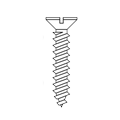
Mae Haad | KPG
Re-installation of Buoy chain in Mae Haad

Taking it Home
Taking the Project to your island or bay
An Ongoing Battle
You wouldn’t be reading this if you didn’t already know that coral reefs are not exactly in great shape at the moment. In fact, a disconcerting 75% of the world’s reef are considered threatened. The broad consensus is that Climate Change, Overfishing and Eutrophication are the main culprits, but on a local scale, different factors can contribute significantly to these problems.
In addition to the aforementioned problems, shallow bays attracts hundreds of snorkelers daily during the high season. Unfortunately, they tend to bring feet and anchors , and only few tend to bring swimming skills or at least some common sense.
Bring Back the Buoys!
Fortunately, solutions to handle boats, divers and snorkellers have been around for a few hundred years: buoys. Buoys allow boats to moor without anchors, divers to ascent and descent without contact, and provide something to hold on to for snorkellers, so they can keep their fins where they belong: off the coral.
The local businesses and the DMCR have already spend substantial amounts of money to install moorings in the Gulf of Thailand, but they are unable to constantly maintain these systems. We think we can, but we’ll need some help from you. We think that, together with help from local stakeholders and you, we can reinstall the moorings systems, and might even have a longer lasting solution. Please read on!
Meet Sail Rock
Sail Rock, or Hin Bhai as it is called by the locals, is arguably the best dive site in the Gulf of Thailand. It is the only structure for miles in a nutrient rich area, so it attracts all sorts of interesting visitors. From Frog Fish to Whale Sharks, nearly every pelagic or reef bound species is found here, which makes it extremely valuable from a conservation point of view.
It also attracts other visitors: In high season, divers from Koh Tao, Phangan, Samui and even as far as Chumphon flock to the rock, and on a good day up to 300 divers can share an area that is less than half a square kilometer. Most local dive operators have adopted a very sustainable way of handling their divers, but there is others.
To provide a safe ascent and descent opportunity, dive-lines need to be attached to buoys, because even very experienced divers need orientation on a choppy day. These lines are usually tied to the resident razor clam population, which is, quite frankly, a very good idea. They’re sturdy, and don’t really care whether you attach something to their base. It’s the process of tying and untying that creates the damages, so a lot of divers have already experimented with semi-permanent attachments, to reduce the stress. Unfortunately, they usually don’t last long, because they get cut by well meaning and completely ill-informed people.
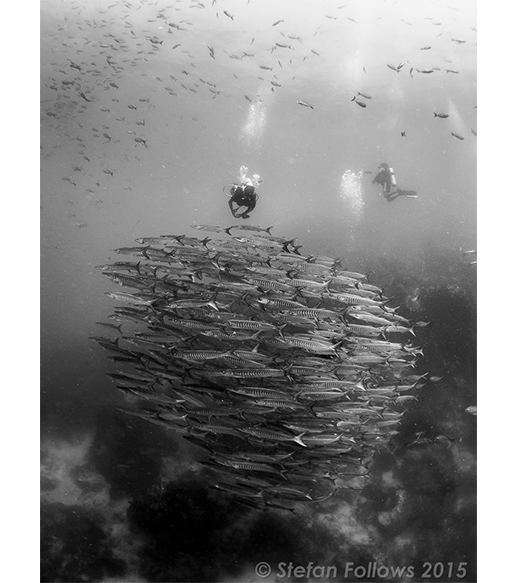
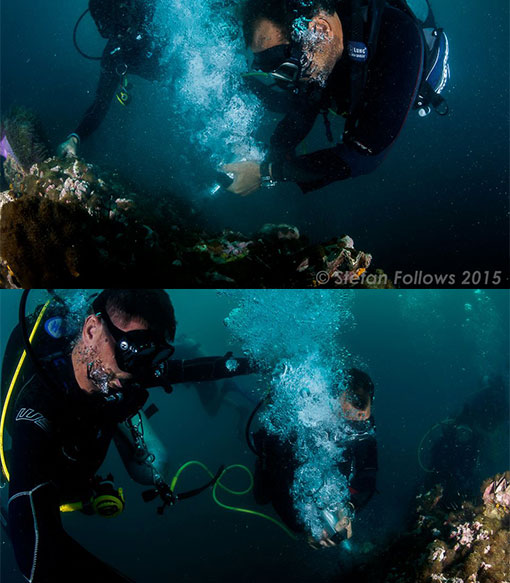
What can be done?
We think that installing a permanent bolt and ring system on Sail Rock is the best, and most ecologically friendly solution.
We have already tested a home-made pneumatic impact drill, which surprisingly works. But it’s not yet able to drill into the granite core of Sail Rock, so we’re currently trying to source one of these bad boys:
 Should you have one in your storage, please get in contact. Or please read on to see how you can help
Should you have one in your storage, please get in contact. Or please read on to see how you can help
Meet Mae Haad:
“In addition to providing excellent snorkeling, Mae Haad with its abundant and varied marine life and shallow coral reefs is the perfect place to learn diving or just brush up your rusty skills. The length of Mae Haad’s coast line is fronted by a shallow coral shelf which can vary between 50 and 100 meter wide and is divided in the center by a narrow channel cut from the coral to allow boats, divers and snorkelers out into deeper waters without disturbing the reef . Once over the reef in deeper water, coral formations dot the length of the bay, almost like a bread crumb trail to Koh Mah.”
(http://www.chaloklumbayphangan.com/mae-haad/)
This must be from a while ago, because now Mae Haad sports about 15-35% live coral, which tends to cluster in a 5-8m strip of the outward reef.
What happened? Climate change (mass bleaching in 2010), Anchor damage, and generous trampling by snorkellers.
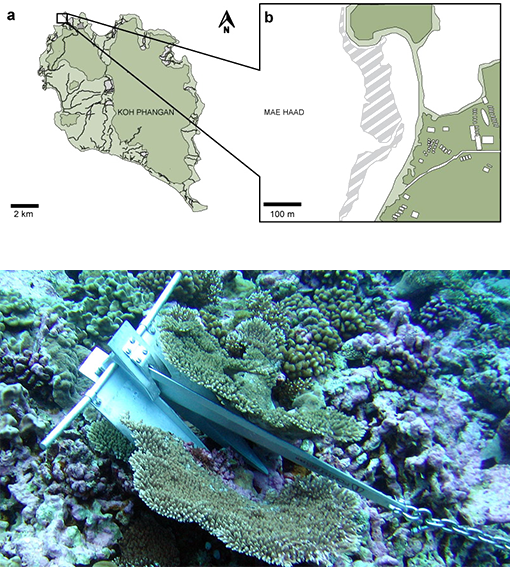
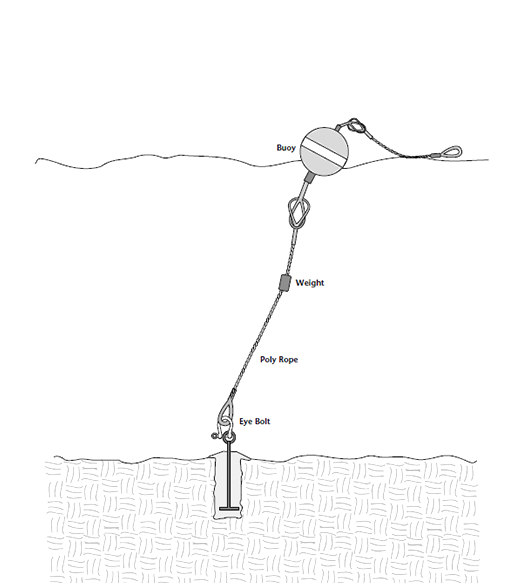
What can be done?
One approach would be education.
Which is great, and we already have had great success with the boat operators that we can reach. But there’s quite a few that we can’t, and it’s quite frankly impossible to reach every snorkeler that is going to Mae Haad (languages, channels of booking etc. pp.). Even western managed dive schools have proven to ignore sound advice, which is sort of outraging, given that their livelihood directly depends on corals.
So we propose, together with our partners from the DMCR and local dive schools, to simply re-install the buoy system that was already there, but was unfortunately destroyed by a freak storm in 2011.
- Mk I was tied to the live coral, which proved to be rather ineffective, but was rather cheap.
- Mk II will use sand screws (helix anchors), which promise higher efficiency and durability.
We are currently testing a cheap, locally made anchor (thank you Gavin Evans, and Hinch from the Holy Grill, Chaloklum), and we hope to use it soon in Phase One:
Mooring installation in 3 phases:
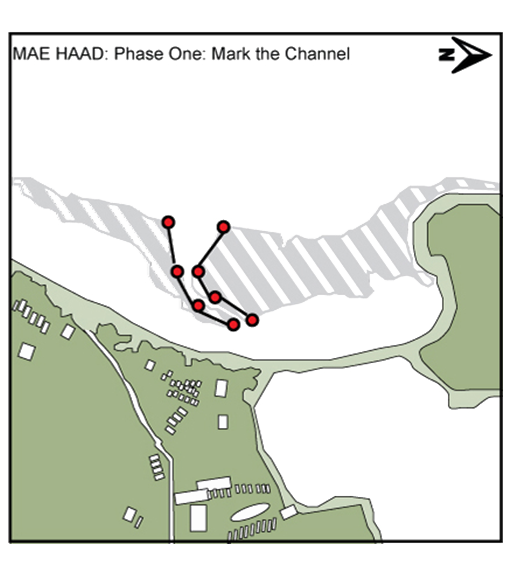
Phase One
Marking the Channel
This should provide a safe passage for boats, divers and swimmers through the channel in low tide.
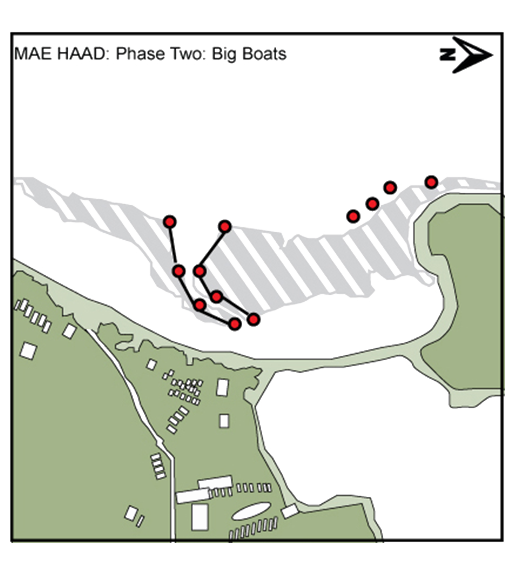
Phase Two
Big Boats
Providing permanent mooring buoys for tourboats, should alleviate the need for boozes cruises to drop anchors
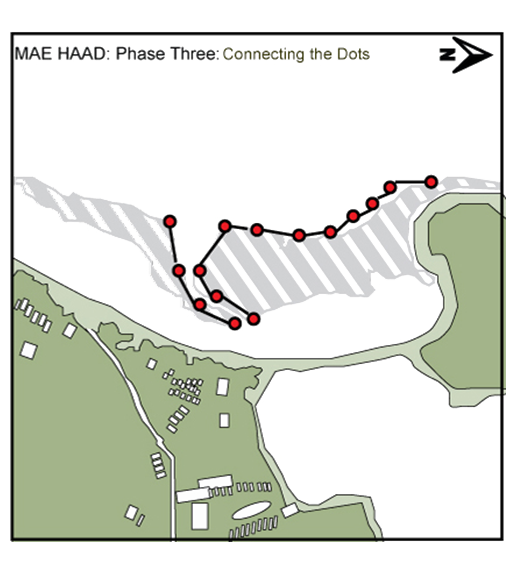
Phase Three
Connecting the Dots
Connecting all moorings with a chain of smaller floats, provides stable anchoring for longtails and snorkellers

WE NEED YOUR HELP
Surprisingly, small NGO’s do not get filthy rich from their normal work, we need some extra cash.
So, why not buy one of our new T –Shirts or hoodies? Are you a dive professional and you would like to help installing? Please talk to your dive school’s boss. We’ll need you.
Thank you!

I HAVE ENOUGH T SHIRTS
Just Take my money.
We’re currently not registered for tax deductible donations, but your help is still appreciated. We’re in the process of getting registered, if you would like to make a tax deductible donation, please get in contact. If not: please click the button!
Browse other projects
No Results Found
The page you requested could not be found. Try refining your search, or use the navigation above to locate the post.
Header Image: Modified after Helen Dittrich, https://www.flickr.com/photos/helzway/3142641984/


